Every garden tells a story, and the tale of this one in Western North Carolina begins around 2010. That’s when Bill Bell purchased a sloping plot surrounded by dense, mossy forest along the banks of the Whitewater River, down a snaking, plunging dirt road a short drive from the pleasantly bustling mountain village of Cashiers. But as stories go, this one didn’t exactly start off with a bang.
“At that point it was in severe disrepair,” Bell recalls. The house, which had idled in foreclosure, suffered from mold and neglect. The yard was “really depressing”—choked with weeds, strewn with railroad ties, and littered with oyster shells, the ghosts of revelries past. “I took my parents by to look at it,” he says. “They saw the grounds and the house and were like, ‘What are you thinking?’” But Bell, who grew up in Tallahassee, Florida, and has long resided in Atlanta, had been hunting for waterfront property in the area, and he found the almost-three-acre spot irresistible: close enough to town but bordering the wonderland of Nantahala National Forest, with a few hundred feet of riverbank all its own and six or seven waterfalls not far downstream. “We have literally one of the wildest places in North Carolina,” he says, “right out our back door.”
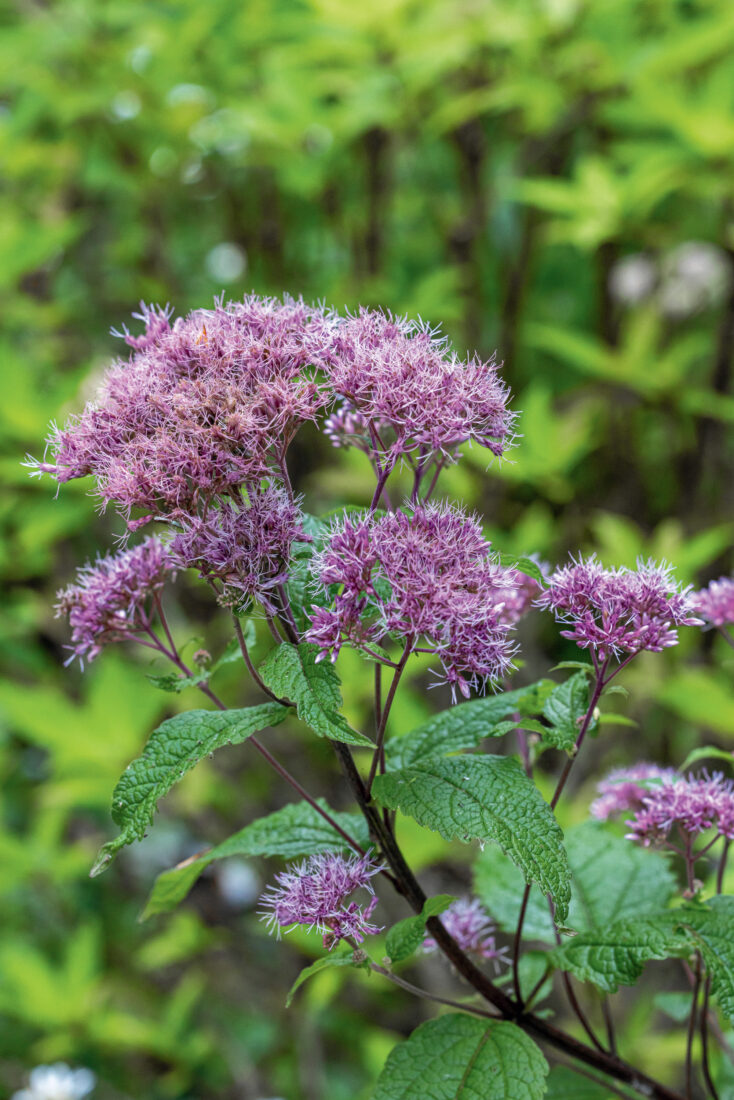
Photo: TIM ROBISON
Joepye weed.
About five years into this rehab project, having made the main house once again livable, Bell happened to hear about Mary Palmer Dargan, a landscape architect then based in Cashiers whose visionary garden designs appear in the South Carolina Lowcountry, New Orleans, and elsewhere. A self-confessed “walking encyclopedia” of plant species, Dargan has also written books on landscape design and for years taught at Clemson. “We hit it off from the start,” Bell says. “She was really good at putting together the big picture, and I really enjoyed filling in a lot of the plant selections.”
When she came on board, Dargan says, “there was nothing but grass and a couple of moth-eaten mountain laurels.” And so she conjured up a plan that wove plenty of function into the greenery—imparting “a feeling of transitional spaces and rooms” screened off by plantings, each terraced section flowing downhill into the next; harmonizing with the river and more than eighty inches of yearly rainfall to “direct, absorb, and enjoy water across the site”; using native plants whenever possible to welcome beneficial insects and songbirds (while including exotic species as needed, especially those like hellebores that deer find distasteful); installing “permeable paving” in the form of local river rock. A decade in, Dargan’s botanical acumen has helped transform the plot into a lush, verdant Southern Appalachian refuge—one that somehow feels like both an extension of the forest and a ferny oasis within it. “It’s kind of an informal style, but it still looks very structured,” Bell says. “She’s a real artist.”
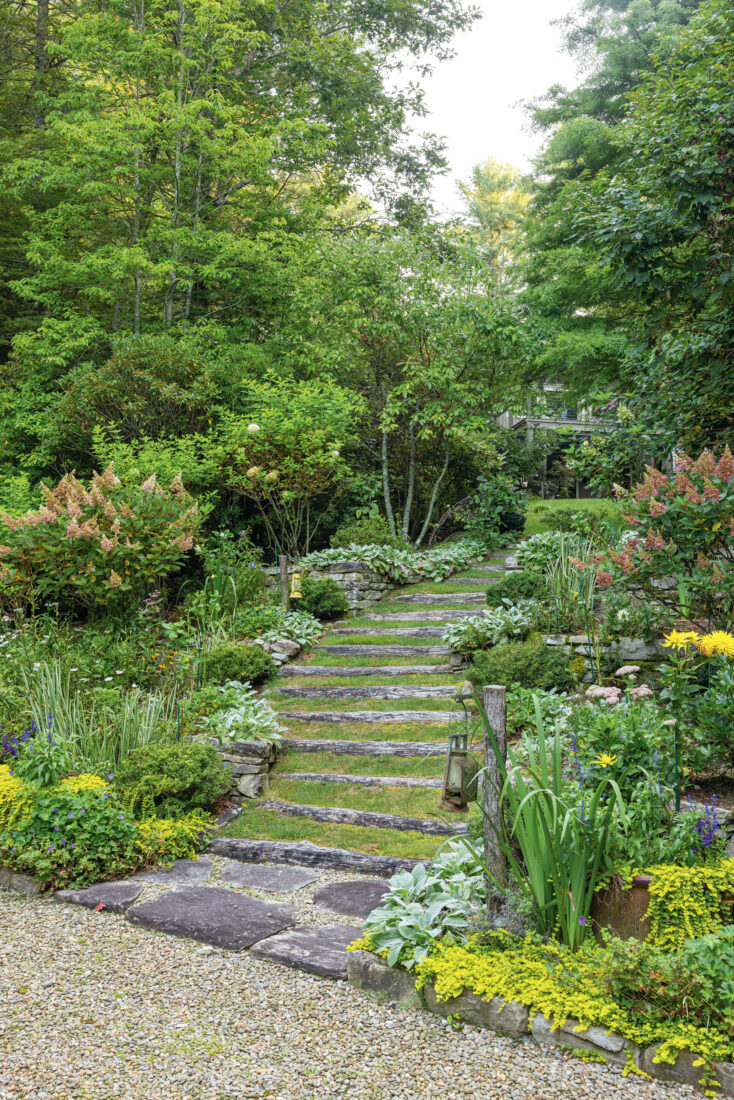
Photo: TIM ROBISON
Tree-form hydrangeas flank steps.
Thriving in this temperate rainforest, the plantings have blossomed into a year-round collage of overlapping textures and colors. A bigleaf magnolia near a guesthouse (a.k.a. “the Barn”), one of several on the property, boasts blooms wider than a dinner plate, its leaves fanning out like propeller blades. Bright chartreuse plants infuse light into dark edges, practically glowing from within: clumps of Japanese forest grass, weeping Golden Falls redbud trees, Sun King aralia. Clusters of reddish-purple smoke bush loom tall over beds of tiger lilies. Cinnamon ferns and variegated Solomon’s seal grow alongside comically huge hostas. At least a dozen varieties of Japanese maples, and nearly as many of ferns, set a tone of Zen-like tranquility. Little wonder that during the pandemic, Bell and his wife, Sarah Catherine, fled here from the city some twenty-five weekends in a row.
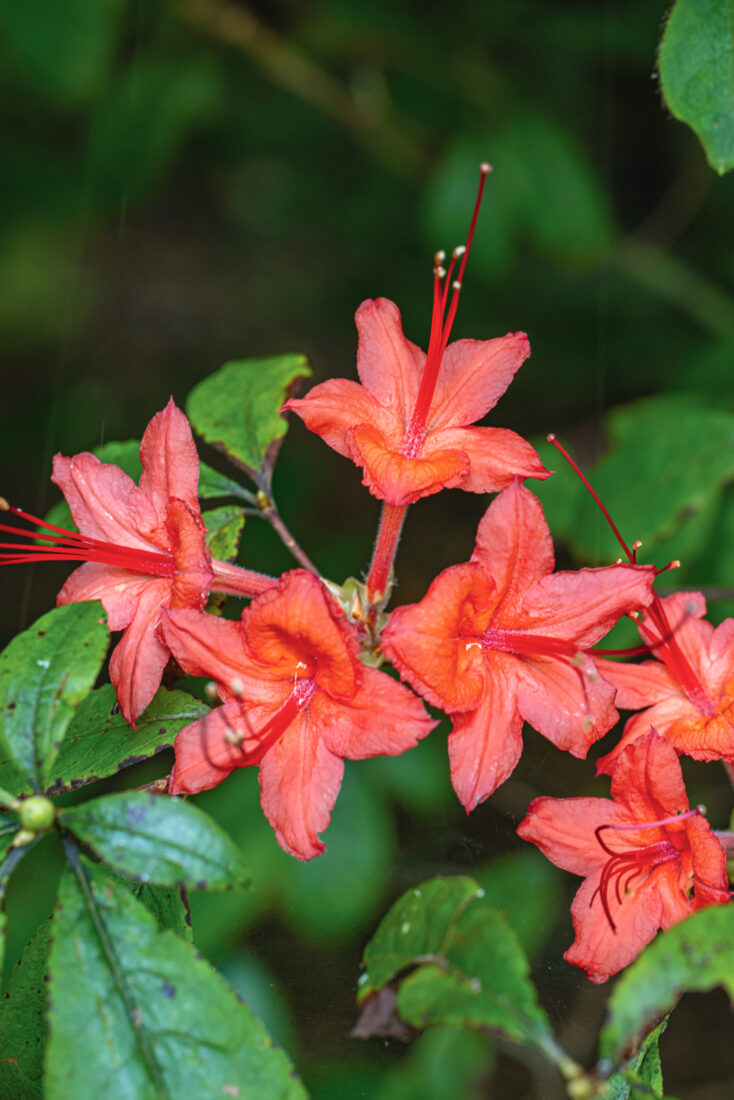
Photo: TIM ROBISON
Flame azalea.
“Some gardens, you can just feel how they’ve been sort of overmanicured,” Sarah Catherine says. “This one doesn’t feel so curated that it’s not nature. The sounds of the garden are also so beautiful: the birds, the wind chimes, the crows that come in the morning. The river and how it always has a different voice, depending on how much it’s rained.”
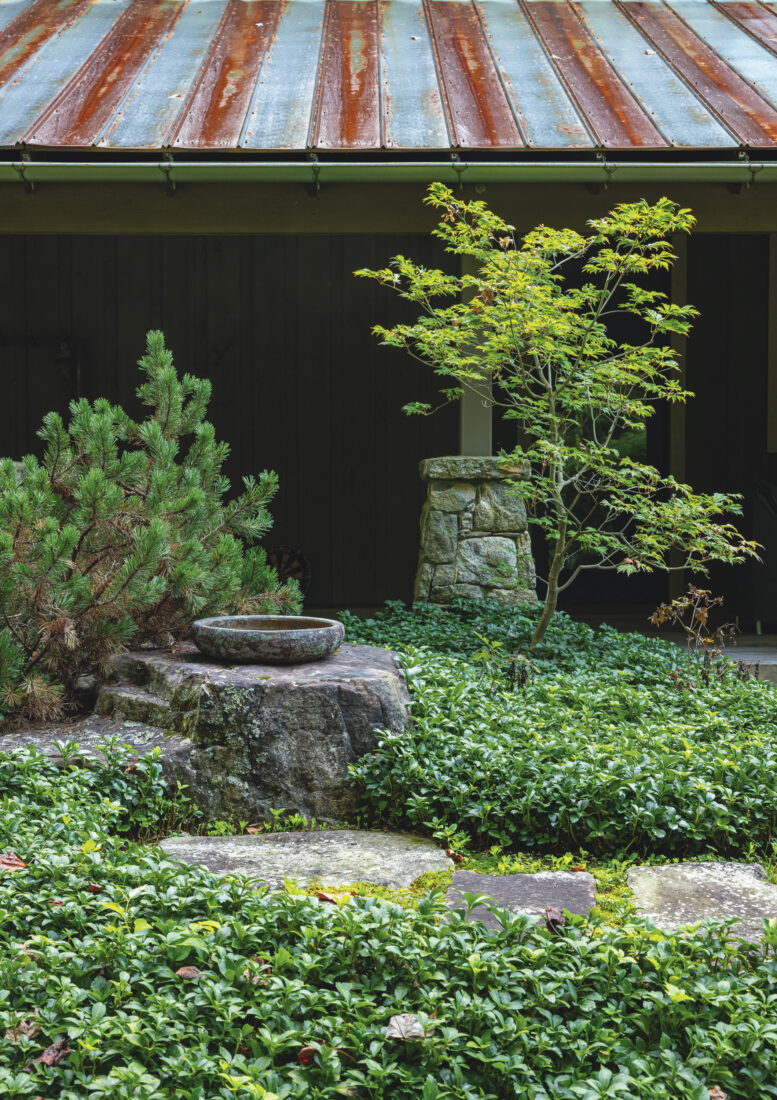
Photo: TIM ROBISON
Japanese maple in a Zen-inspired bed.
This garden also doubles as a playground. “We’re really active people,” Bill says, and the couple and their guests immerse themselves in the wilderness at their doorstep. They’ll cast for trout below the house, embark on springtime wildflower hikes, step into the river by a bridge downstream and wade and fly-fish all the way back home. They’ll brave a deep pool in the current near the garden for soul-cleansing cold-water swims. But they also often set aside time to nestle on a streamside bench, to simply surrender to the stillness.
“The one place where we just sit for hours and hours and hours is there by the river,” Bill says. “There’s just something about it that transfixes you. This is the only place I don’t ever get tired of.”
Mike Grudowski has been a contributing editor to Garden & Gun since 2010. He has also worked as a senior editor for Outside, New England Monthly, Rocky Mountain, and other magazines, and his writing has appeared in Men’s Journal, The New York Times Magazine, Smithsonian, and others. He lives in Charleston, South Carolina, with his wife, Kelly, and two demanding rescue cats, Jack and Scout.

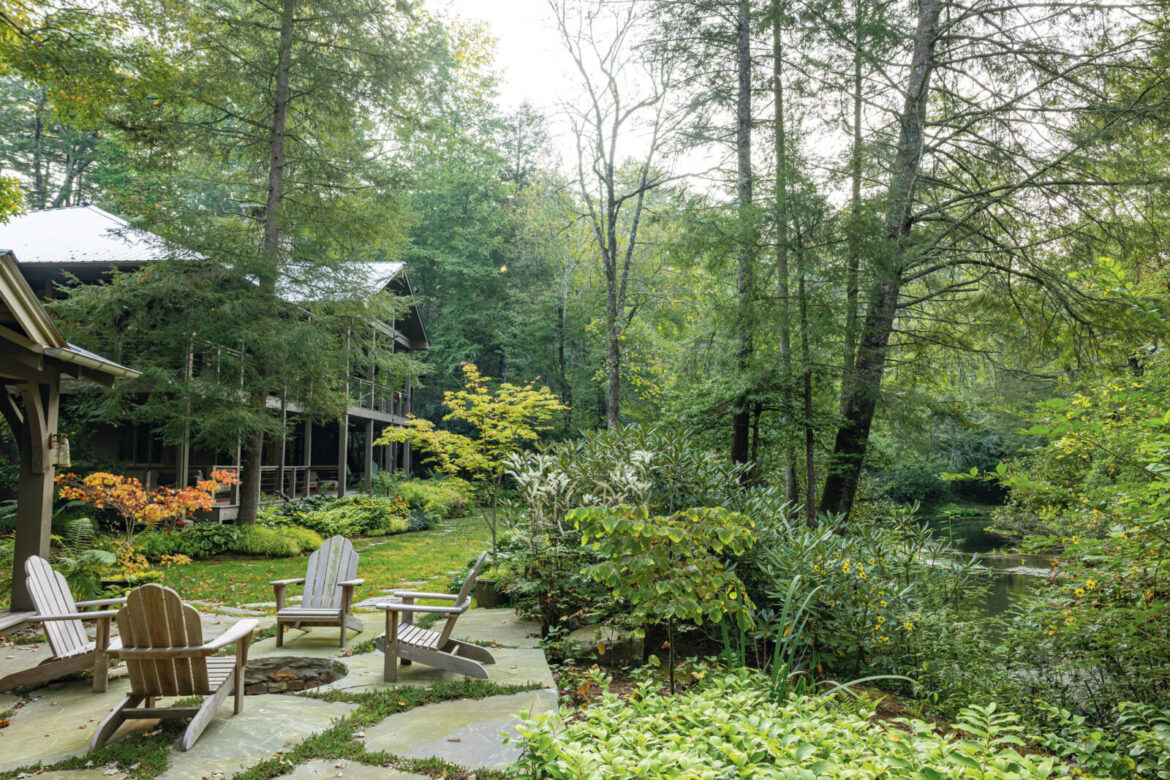
Comments are closed.